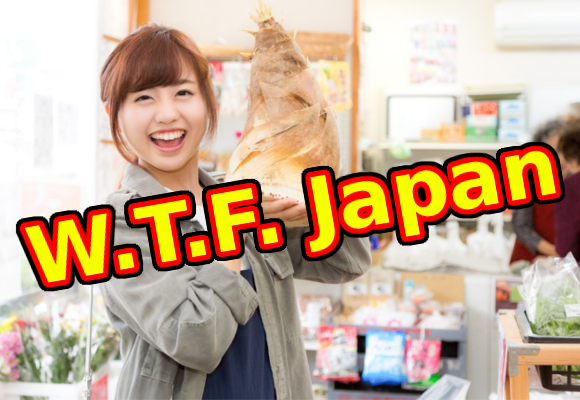
Some spring foods are a little… different in Japan.
For the past two seasons we’ve taken a look at what autumn and winter have to offer food-wise in Japan. And now that spring has sprung, it’s time for another Well-Fed Top Five so you can make sure you don’t miss out on any specialties from this time of year!
That’s why today we’re counting down the top five Japanese spring foods. While spring in Japan delivers some of the same natural goodies that can be found in other parts of the world, there are others that are unique to Japan, with — well — unique tastes of their own.
So let’s get to it! Starting off with…
Honorable Mention: Cabbage/Onions
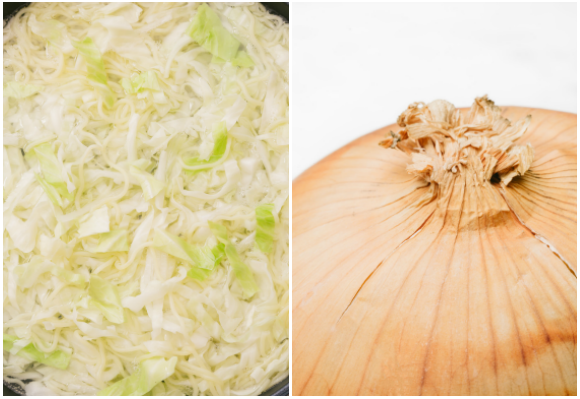
Cabbage and onions are foods that are eaten year round, hence why they’re only an honorable mention, but it’s at this time of year when they’re at their peak.
Spring cabbages are typically smaller and rounder than ones grown in winter, but they have a softness and sweetness to them that makes them the preferred variety.
▼ One popular way of using spring cabbage is adding it to pasta,
as this person did with bacon, peppercino, and yuzu pepper sauce.
Similarly, spring onions are sought after for their distinct soft texture and hint of sweetness to compliment the typical tear-inducing effect and aroma. They can be used in stir-fry, as a meat topping, or as a spring potato side dish.
▼ A salad with fresh spring onions, asparagus, and broccoli.
The whiteness of the onions really makes it look cool and crispy!
食卓にも春🌸香川産のアスパラ、静岡産の春たまねぎ、ベランダのブロッコリーの菜の花☺️ pic.twitter.com/s05vbLbYKD
— CHARKIE ( ´ω`) (@charkiechocolat) February 26, 2017
#5. Springing from the ocean: clams and sea bream
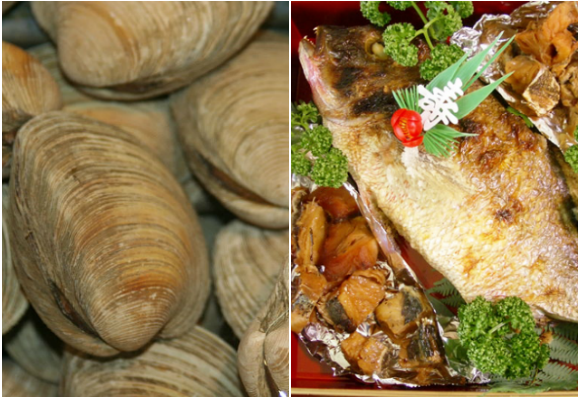
(edited by SoraNews24)
Seasonal foods aren’t just about what’s coming out of the ground. For Japan, where food from the sea has always been just as important, seasonal seafood is just as much a part of spring as anything else.
And spring is the time of year when clams have their spawning season. Around May is when the fun begins, so before then in March and April, they’re busy getting as fat and juicy as possible, making it the perfect time to catch them.
A favorite pastime for Japanese children living near the coast is to go during low tide and grab as many clams as they can in the sand. There are a ton of ways to cook them — steamed, in miso soup, topped on rice or pasta — and one favorite is simply frying in butter.
▼ It’s not complicated, but then again
some of the best food in the world isn’t.
アサリバター最高美味すぎ幸せ😻💩👉👌💋👅🏩 pic.twitter.com/97EQEjBuVu
— ☆プロピ☆-ラブトレイン- (@exshanma234des1) March 30, 2017
And if you’re familiar with Japanese sweets then you’ve probably heard of taiyaki, the fish-shaped cake filled with sweet bean paste.
▼ It’s soft, warm and sweet, kind of like a
fish-shaped waffle that you can carry around with you.
Spring is the season for tai (“sea bream”), the fish that taiyaki is named after. Similar to clams, their spawning season is May as well, so this is the time of year when they’re at their largest and have the most fat, making spring sea bream prized above all other seasons’.
One other thing that sea bream have going for them at this time of year is that April is the start of the new school year and the month when new hires are usually brought into companies and organizations. Since their Japanese name tai is similar to medetai (“lucky/auspicious”), that makes them a typical sight at school entrance ceremonies or welcome parties for new hires.
▼ Or at kindergarten-entrance celebrations, as this family did for their
four-year-old daughter, because you’re never too young for good luck.
めでたい!無事娘の入園式終わりました!学生時代に汗水っぽいのを垂れ流ししてた戦友達の子供と同じ幼稚園です。チビは「幼稚園ワクワクする!」と楽しみにしております。我が家のメモリアルに登場する鯛!焼き鯛注文する人少ないんかな?世間はケーキやな。と言いながら家族でつついて完食しました! pic.twitter.com/J3EyFlznK8
— ジャンぽん◢│⁴⁶ さちゃん推し (@jyanjyanpon) April 10, 2017
#4. Strawberries
Before we get into some of the stranger items on our list, it’s time for one last familiar spring favorite: strawberries.
Even though we said before in top five winter foods that strawberries are a winter favorite (they pop up all the time on Christmas cakes), these rambunctious red fruits are popular enough to warrant them another spot on the this list as well since spring is the season they’re traditionally harvested.
Plus spring is the time of year when you can do one thing with strawberries that you usually can’t do any other time: go strawberry picking.
▼ I picked these two for you!
…literally these two. The rest are mine.
今日は家族でいちご狩りに行ってきました⁽⁽◝( ˙ ꒳ ˙ )◜⁾⁾♡
— MiNO-Disconnect Cendrillon-(ディスコネ) (@mino_Re_roll) April 8, 2017
70個くらいは食べたかな!!!!うん!!!!
いちごだいすき!!!!
食べ過ぎたけどすでにもう食べたい…
いちごがすきとかアイドルっぽい…
…https://t.co/AsBKc9VHuR #dmmyell pic.twitter.com/f6aUQCqa0X
While there are many different ways to use strawberries in baking, everything from strawberry shortcakes to strawberry-topped waffles, you really just can’t go wrong with just eating a bunch of raw, fresh-picked spring strawberries.
▼ Warning: do not attempt to bite through your monitor.
We already tried and it didn’t work.
#3. Spring greens: tsukushi and fukinoto
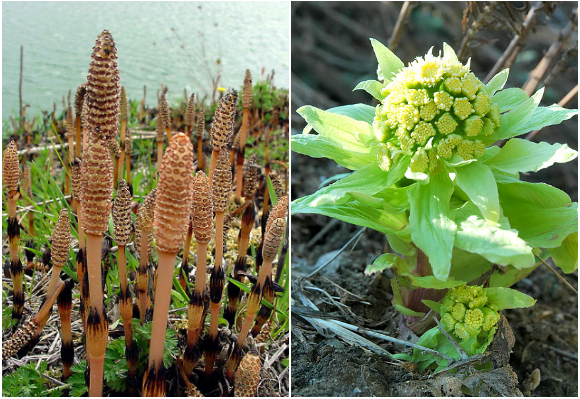
(edited by SoraNews24)
Now we’re getting into some of the uniquely Japan spring foods. If you’ve never heard of either of these two plants before, no worries, but you’re missing out on some distinctly Japanese spring foods.
First up is tsukushi. If you’ve ever seen/read Hana Yori Dango (“Boys Overs Flowers”), then to answer your first question, no, we’re not talking about Tsukushi Makino.
▼ As much as we’d like beautiful women who punch obnoxious rich
boys in the face to just sprout out of the ground, that’s not the case here.
Tsukushi are long, thin plants that taste kind of like mild asparagus. They tend to grow all over the place, and it’s not uncommon for people to just pick it in the wild and bring it home to soak then cook.
The plants do have a shell-like orange/black part to them that needs to be removed though, making them a bit of a pain to prepare, but if you’re going for a Japanese spring feeling in your cooking, you can’t really beat tsukushi. They can be eaten by themselves or mixed into other dishes like stir-fry or salads.
Personally I’m not a huge fan of tsukushi. You can really, really taste the fiber on them. But many Japanese people swear by them, seeing them as a quintessential spring food.
▼ Just look at the size of that heart-eyed face! This person said:
“Had some delicious tsukushi this year. It’s spring!”
今年も土筆を美味しく食しました。
— マッキン (@makkin0520) April 8, 2017
春ですね! pic.twitter.com/rYmpMHmbXM
Another common spring green is fukinoto (“butterbur sprouts”). Like tsukushi, it can be commonly found growing in the wild, just waiting to be picked and cooked. They have an earthy, bitter taste to them, and a very fragrant, spring-like aroma when cooked.
They can be used in a variety of dishes such as soup or pickled fukinoto, but one of the most popular ways is to deep fry them tempura-style.
▼ Although to be fair,
anything is delicious tempura-style.
フキノトウ天ぷら! pic.twitter.com/HVUhsULsZM
— ぽかり犬(いっぬ)⌬ (@partial_yellow) March 28, 2017
Again, I’m personally not a huge fan of fukinoto. Usually what happens when I eat them with Japanese friends is everyone else smiles and says “tastes like spring!” while I just sit there, chewing on the same fibrous piece of the hundredth time, wondering when the spring flavor will finally kick in.
For spring I prefer things with a slightly sweeter edge such as…
#2. Sakura mochi
Next up on the list is another Japan-only favorite, sakura mochi. These flower-flavored sweets are typically eaten during Hina Matsuri on March 3 and during hanami flower-viewing parties in the spring.
▼ They come in the round Kansai variety (like in the photo above),
or the burrito-like Kanto variety (pictured below).
Most of the sakura mochi is similar to other Japanese mochi: it’s a pink-colored rice cake on the outside with sweet bean paste on the inside. But what sets it apart is the sakura leaf it comes wrapped in. While you don’t have to eat the leaf, it’s kind of part of the package.
▼ Come on! You can’t just leaf it like that.
はあん!和菓子でも一二を争うほど大好きな桜餅!餡子の甘さと桜の葉の塩加減がたまらねえ!過去の写真からお江戸で食した桜餅を。 pic.twitter.com/5AIfbtU25w
— relychoris(リライコリス)お肉研究会💉💉💉💉 (@relychoris) April 13, 2017
The sakura mochi itself tastes like typical soft, sweet mochi, and the sakura leaves are kind of like a faint cherry with a twist of sour. It’s an interesting flavor, and you can bet that when spring comes around, just like so many things are suddenly pumpkin spice in the U.S. during autumn, a lot of sweets and snacks in Japan are sakura mochi-flavored.
▼ Starbucks, McDonald’s, pie and doughnut shops
all turn a shade pinker in spring.
And the #1 Japanese spring food is…
.
.
.
.
.
.
.
.
.
.
1. Takenoko
Oh yes, here we are, the big one… literally!
Takenoko are bamboo shoots, the young sprouts of bamboo before they become too big and inedible. Many species of adult bamboo are toxic for human consumption, but while they’re in their sprout-phase, some of them can be safely cooked and eaten.
▼ There are a variety of cooking methods, but one of the most popular is
boiling to remove toxins, then just frying them with herbs and spices.
春の味覚「たけのこ」を味わおう。アクの抜き方~焼く・煮る・揚げる〈美味しいレシピ〉をご紹介https://t.co/NpGuKhQmwx pic.twitter.com/dNqAocgDuZ
— キナリノ公式 (@kinarino) April 3, 2017
Takenoko literally means “bamboo child,” which makes sense considering that’s basically what they are. Depending on the species of bamboo the takenoko are, and how long it’s had to grow, their size can very tremendously.
▼ One of these two takenoko is a bit more of a “child” than the other.
たけのこ掘ってきた
— 貴和たんඩිඩීඩ ඪ ඞීඞීඞ යීය ඔ ඹ (@moujitsu) April 2, 2017
見よこの土に完全に埋まってるのに掘り起こせるわたしの能力 pic.twitter.com/mJLm9MHghS
Takenoko have a good, hearty texture to them. They’re very fibrous, kind of like a rougher carrot. They go well with pretty much everything — rice, soup, sir fry, whatever — but they’re always going to be best when fresh.
▼ And best of all, if you’re not a fan of real takenoko dug up from the ground,
then you can fall back on the anytime-of-year favorite: chocolate takenoko.
久々に食べたたけのこの里がうますぎて引いてる。え、こんな美味し買ったっけ? pic.twitter.com/qQFwlIzQrL
— はぎー@アイドル依存症 (@Sym_Krn) April 3, 2017
▼ Or you could combine the two like we did and make chocolate takenoko rice.
It, um, well… definitely tastes like something’s springing.

So there you have it, the top five Japanese spring foods. Did we miss any of your spring favorites? Let us know in the comments and maybe you can enjoy snacking on some virtual spring foods with your favorite pet from the top five best Tamagotchi releases.
References: RankingShare, Up Your Life, Kazoku de Trivia
Top image: PAKUTASO (edited by SoraNews24)
W.T.F. Japan will be back next Thursday. In the meantime, give me a follow on Twitter and let me know if there’s any topics you’d like to see covered. See you next week!

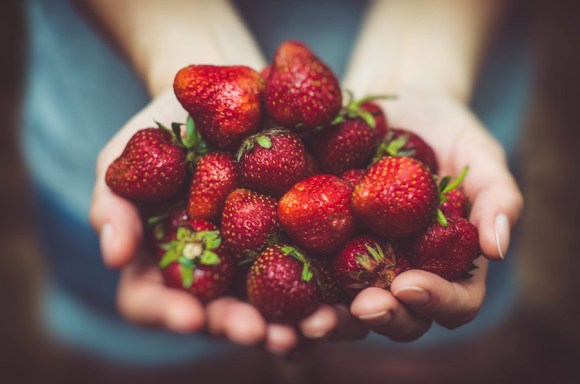
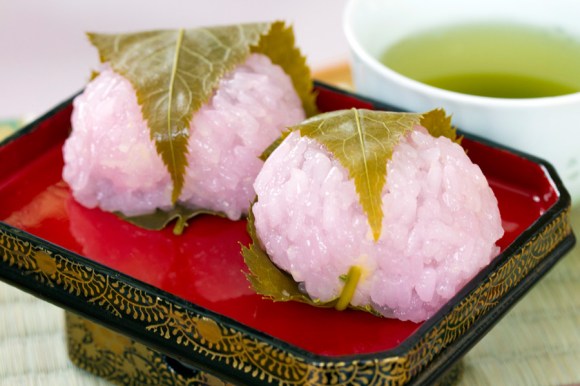
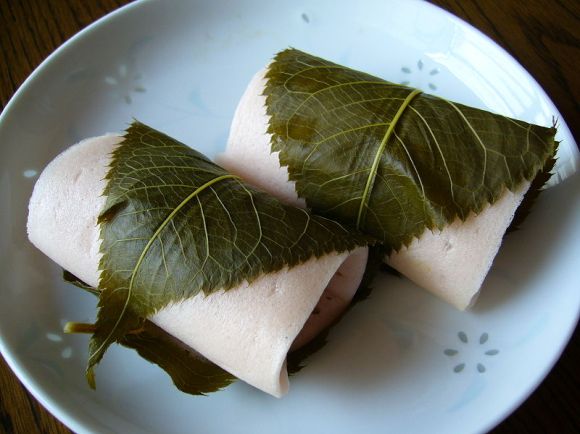
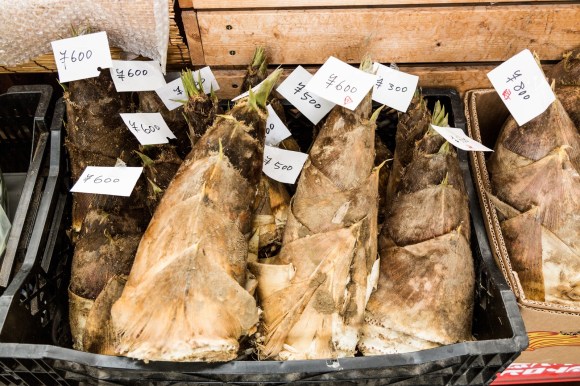
 W.T.F. Japan: Top 5 Japanese winter foods【Well-Fed Top Five】
W.T.F. Japan: Top 5 Japanese winter foods【Well-Fed Top Five】 W.T.F. Japan: Top 5 Japanese autumn foods 【Well-Fed Top Five】
W.T.F. Japan: Top 5 Japanese autumn foods 【Well-Fed Top Five】 W.T.F. Japan: Top 5 biggest Japanese food challenges【Weird Top Five】
W.T.F. Japan: Top 5 biggest Japanese food challenges【Weird Top Five】 W.T.F. Japan: Top 5 best Tamagotchi releases 【Weird Top Five】
W.T.F. Japan: Top 5 best Tamagotchi releases 【Weird Top Five】 W.T.F. Japan: Top 5 Japanese foods for people who don’t like seafood 【Weird Top Five】
W.T.F. Japan: Top 5 Japanese foods for people who don’t like seafood 【Weird Top Five】 Harajuku’s new permanent Tamagotchi shop is filled with cuteness and a surprising lack of poop
Harajuku’s new permanent Tamagotchi shop is filled with cuteness and a surprising lack of poop We revisited Sweets Paradise after a decade to see if Japan’s dessert buffet still delivers
We revisited Sweets Paradise after a decade to see if Japan’s dessert buffet still delivers McDonald’s Japan’s moon-viewing mochi pies are a little more westernized-tasting this year
McDonald’s Japan’s moon-viewing mochi pies are a little more westernized-tasting this year Japan’s new difficult-to-drink-from beer glass protects your liver, but it’s a brutal experience
Japan’s new difficult-to-drink-from beer glass protects your liver, but it’s a brutal experience We eat the best crayfish of our life at a Tokyo specialty restaurant【Taste test】
We eat the best crayfish of our life at a Tokyo specialty restaurant【Taste test】 Starbucks teams up with 166-year-old Kyoto doll maker for Year of the Horse decorations【Photos】
Starbucks teams up with 166-year-old Kyoto doll maker for Year of the Horse decorations【Photos】 You can now buy a Japanese train station clock in Japan
You can now buy a Japanese train station clock in Japan Harry Potter Cafe opening in Tokyo and the menu is nothing short of spellbinding【Photos】
Harry Potter Cafe opening in Tokyo and the menu is nothing short of spellbinding【Photos】 Is the new Shinkansen Train Desk ticket worth it?
Is the new Shinkansen Train Desk ticket worth it? We visited a “terrible” Japanese hot spring hotel near Narita Airport
We visited a “terrible” Japanese hot spring hotel near Narita Airport Starbucks Japan ready to get Year of the Horse started with adorable drinkware and plushies【Pics】
Starbucks Japan ready to get Year of the Horse started with adorable drinkware and plushies【Pics】 7-Eleven Japan’s ramen-cooking robot whipped us up a bowl of noodles【Taste test】
7-Eleven Japan’s ramen-cooking robot whipped us up a bowl of noodles【Taste test】 Cyberpunk anime meets traditional culture in Ghost in the Shell gold leaf Japanese changing screens
Cyberpunk anime meets traditional culture in Ghost in the Shell gold leaf Japanese changing screens 7 great places to see Mt. Fuji from without having to climb it
7 great places to see Mt. Fuji from without having to climb it Hello Kitty Choco Egg figures are an adorable trip through three periods of Japanese pop culture【Pics】
Hello Kitty Choco Egg figures are an adorable trip through three periods of Japanese pop culture【Pics】 Japan’s otoshidama tradition of giving kids money at New Year’s gets a social welfare upgrade
Japan’s otoshidama tradition of giving kids money at New Year’s gets a social welfare upgrade We found possibly the quietest Japanese-style hotel in Tokyo’s bustling Shinjuku district
We found possibly the quietest Japanese-style hotel in Tokyo’s bustling Shinjuku district Lacquerware supplier to emperor of Japan and Pokémon team up for new tableware
Lacquerware supplier to emperor of Japan and Pokémon team up for new tableware Sumo Sanrio! Hello Kitty and pals team up with Japan Sumo Association for new merch【Pics】
Sumo Sanrio! Hello Kitty and pals team up with Japan Sumo Association for new merch【Pics】 Can a dirty butthole make you filthy rich in Japan? We’re starting a New Year’s lottery experiment
Can a dirty butthole make you filthy rich in Japan? We’re starting a New Year’s lottery experiment 7-Eleven Japan starts new temporary luggage storage service in over 300 branches
7-Eleven Japan starts new temporary luggage storage service in over 300 branches Disillusionment at Tsukiji’s tourist-target prices led us to a great ramen restaurant in Tokyo
Disillusionment at Tsukiji’s tourist-target prices led us to a great ramen restaurant in Tokyo Tokyo considering law requiring more trash cans following litter increase in heavily touristed area
Tokyo considering law requiring more trash cans following litter increase in heavily touristed area Tokyo’s Tsukiji sushi neighborhood asks tour groups to stay away for the rest of the month
Tokyo’s Tsukiji sushi neighborhood asks tour groups to stay away for the rest of the month Nintendo’s Kirby now delivering orders at Kura Sushi restaurants, but not in Japan
Nintendo’s Kirby now delivering orders at Kura Sushi restaurants, but not in Japan Tokyo event lets you travel back in time, for free, to celebrate 100 years since Showa era start
Tokyo event lets you travel back in time, for free, to celebrate 100 years since Showa era start Sanrio theme park in Japan announces plans to expand into a Sanrio resort
Sanrio theme park in Japan announces plans to expand into a Sanrio resort Japan may add Japanese language proficiency, lifestyle classes to permanent foreign resident requirements
Japan may add Japanese language proficiency, lifestyle classes to permanent foreign resident requirements Survey asks foreign tourists what bothered them in Japan, more than half gave same answer
Survey asks foreign tourists what bothered them in Japan, more than half gave same answer Japan’s human washing machines will go on sale to general public, demos to be held in Tokyo
Japan’s human washing machines will go on sale to general public, demos to be held in Tokyo Japan’s deadliest food claims more victims, but why do people keep eating it for New Year’s?
Japan’s deadliest food claims more victims, but why do people keep eating it for New Year’s? We deeply regret going into this tunnel on our walk in the mountains of Japan
We deeply regret going into this tunnel on our walk in the mountains of Japan Studio Ghibli releases Kodama forest spirits from Princess Mononoke to light up your home
Studio Ghibli releases Kodama forest spirits from Princess Mononoke to light up your home Major Japanese hotel chain says reservations via overseas booking sites may not be valid
Major Japanese hotel chain says reservations via overseas booking sites may not be valid Put sesame oil in your coffee? Japanese maker says it’s the best way to start your day【Taste test】
Put sesame oil in your coffee? Japanese maker says it’s the best way to start your day【Taste test】 No more using real katana for tourism activities, Japan’s National Police Agency says
No more using real katana for tourism activities, Japan’s National Police Agency says Starbucks Japan reveals new sakura drinkware collection, inspired by evening cherry blossoms
Starbucks Japan reveals new sakura drinkware collection, inspired by evening cherry blossoms Updated cherry blossom forecast shows extra-long sakura season for Japan this year
Updated cherry blossom forecast shows extra-long sakura season for Japan this year W.T.F. Japan: Top 5 hardest Japanese habits to break 【Weird Top Five】
W.T.F. Japan: Top 5 hardest Japanese habits to break 【Weird Top Five】 W.T.F. Japan: The top five “sora” references of all time! 【Weird Top Five】
W.T.F. Japan: The top five “sora” references of all time! 【Weird Top Five】 W.T.F. Japan: Top 5 confusing Japanese Internet slang words 【Weird Top Five】
W.T.F. Japan: Top 5 confusing Japanese Internet slang words 【Weird Top Five】 W.T.F. Japan: Top 5 strangest Japanese home goods【Weird Top Five】
W.T.F. Japan: Top 5 strangest Japanese home goods【Weird Top Five】 W.T.F. Japan: Top 5 creepiest Japanese animals 【Weird Top Five】
W.T.F. Japan: Top 5 creepiest Japanese animals 【Weird Top Five】 W.T.F. Japan: Top 5 odd ways Japanese people beat the summer heat【Weird Top Five】
W.T.F. Japan: Top 5 odd ways Japanese people beat the summer heat【Weird Top Five】 W.T.F. Japan: Top 5 most famous pet dogs in Japan【Weird Top Five】
W.T.F. Japan: Top 5 most famous pet dogs in Japan【Weird Top Five】 W.T.F. Japan: Top 5 creepiest Japanese insects 【Weird Top Five】
W.T.F. Japan: Top 5 creepiest Japanese insects 【Weird Top Five】 W.T.F. Japan: Top 5 most ridiculous kanji handwriting shortcuts【Weird Top Five】
W.T.F. Japan: Top 5 most ridiculous kanji handwriting shortcuts【Weird Top Five】 W.T.F. Japan: One year anniversary special! Top 5 W.T.F. Japan articles 【Weird Top Five】
W.T.F. Japan: One year anniversary special! Top 5 W.T.F. Japan articles 【Weird Top Five】 W.T.F. Japan: Top 5 most hilarious Japanese euphemisms 【Weird Top Five】
W.T.F. Japan: Top 5 most hilarious Japanese euphemisms 【Weird Top Five】 W.T.F. Japan: Top 5 kanji with the longest readings 【Weird Top Five】
W.T.F. Japan: Top 5 kanji with the longest readings 【Weird Top Five】 W.T.F. Japan: Top 5 reasons sleeping on the floor Japanese-style is awesome 【Weird Top Five】
W.T.F. Japan: Top 5 reasons sleeping on the floor Japanese-style is awesome 【Weird Top Five】 W.T.F. Japan: Top 5 nicest sounds in Japan【Weird Top Five】
W.T.F. Japan: Top 5 nicest sounds in Japan【Weird Top Five】 W.T.F. Japan: Top 5 strange things Japanese people do for Christmas【Weird Top Five】
W.T.F. Japan: Top 5 strange things Japanese people do for Christmas【Weird Top Five】 W.T.F. Japan: Top 5 most confusing Japanese compound words【Weird Top Five】
W.T.F. Japan: Top 5 most confusing Japanese compound words【Weird Top Five】 W.T.F. Japan: Top 5 most confusing Japanese counter words【Weird Top Five】
W.T.F. Japan: Top 5 most confusing Japanese counter words【Weird Top Five】
Leave a Reply